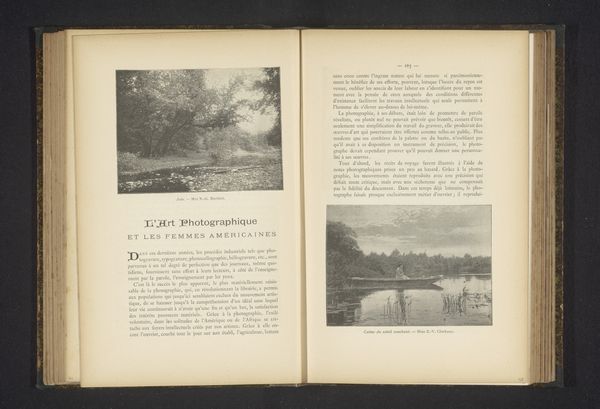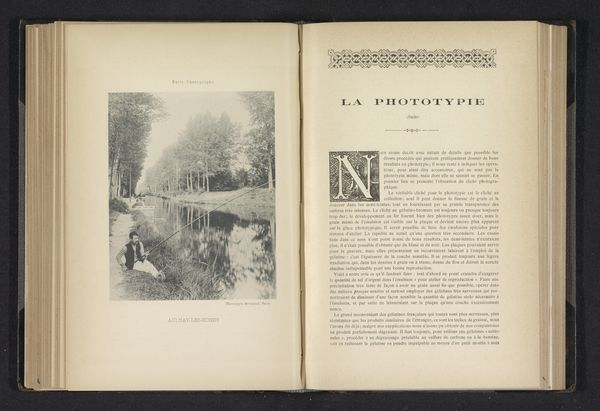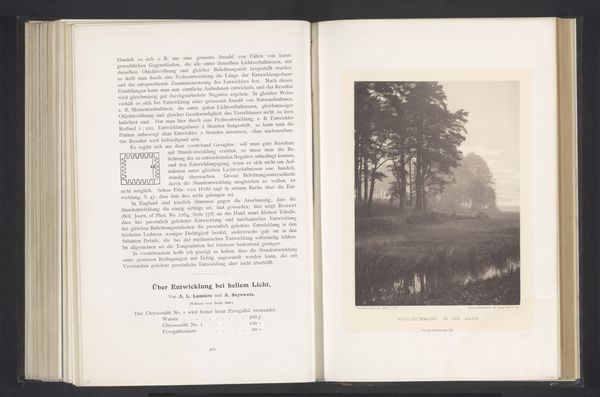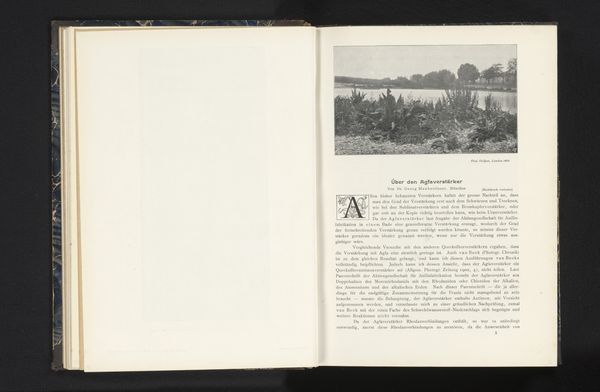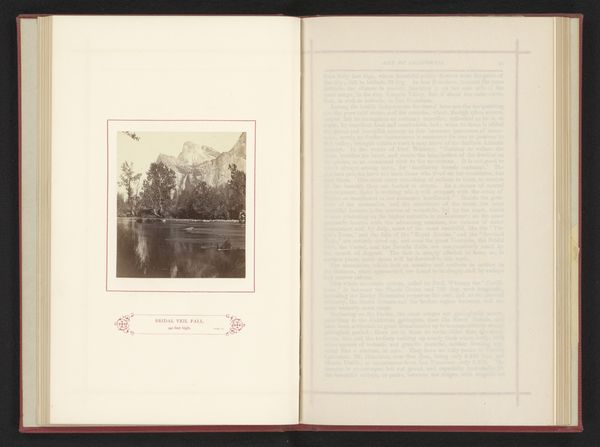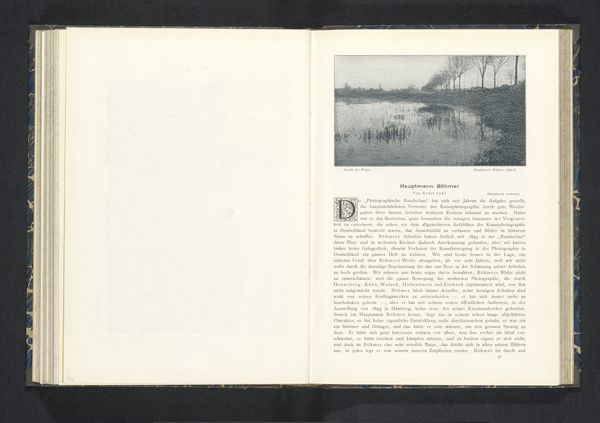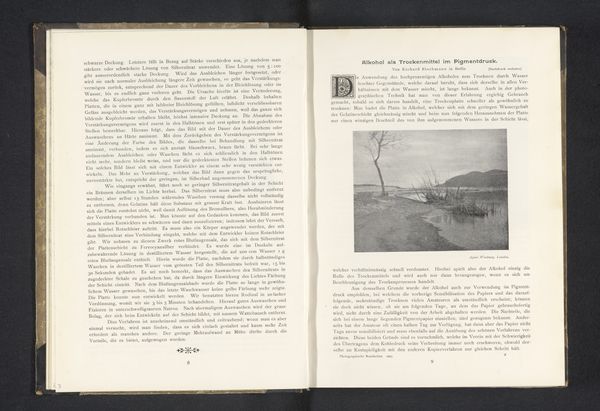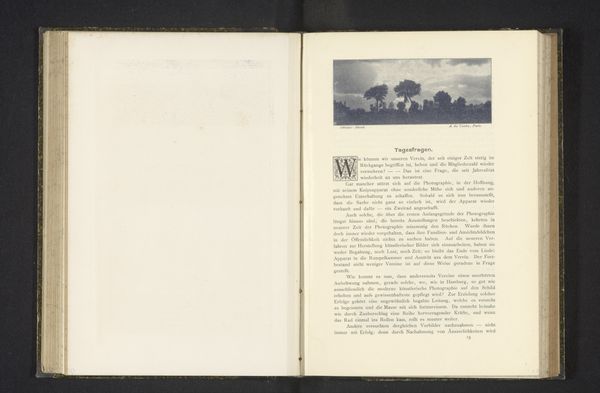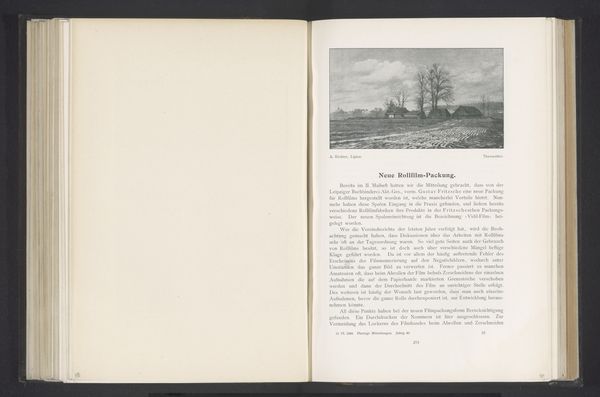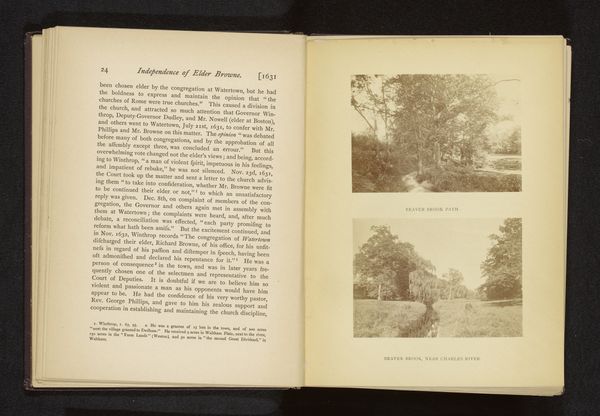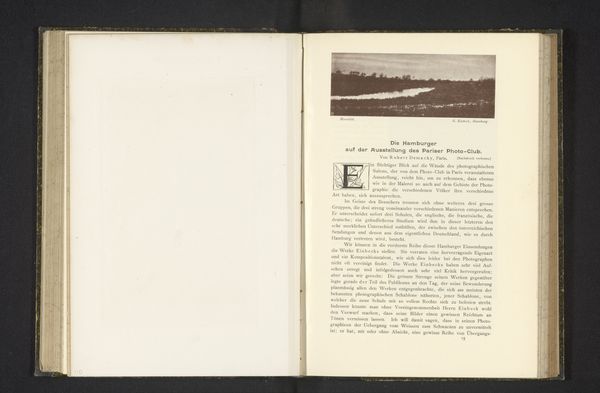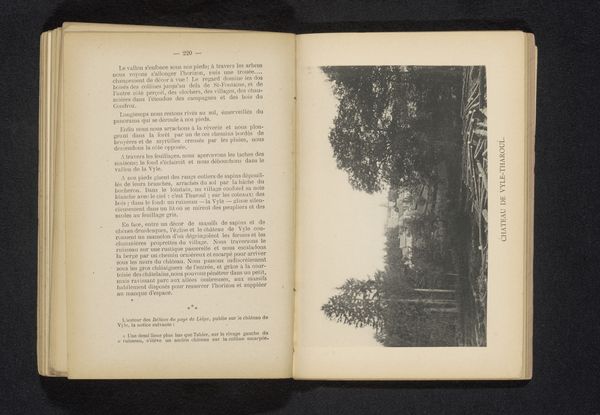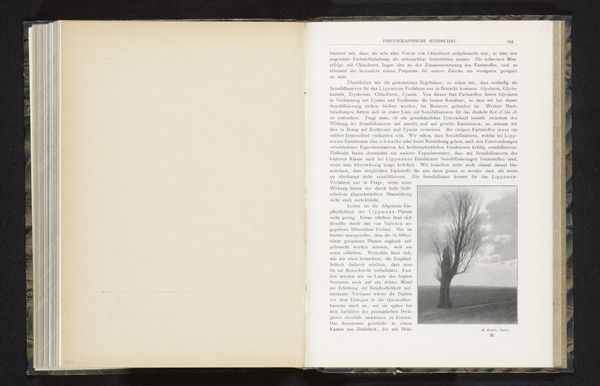
print, photography
# print
#
landscape
#
photography
Dimensions: height 143 mm, width 102 mm
Copyright: Rijks Museum: Open Domain
Curator: Before us, we have a print from before 1894 titled "Landschap", which translates to "Landscape" by Arthur Burchett. It seems to be part of a publication of photography. Editor: It evokes a wistful mood; the contrast between light and shadow gives it such texture, don't you think? It almost feels more like a charcoal sketch than a photograph. Curator: Well, given the time, photography was still refining its artistic expression. Note the emphasis on composition—how the artist uses the bend of the river as a leading line. This could be the photographer playing with newly developed compositional techniques becoming common at the time. Editor: And look how the light catches the crests of the clouds—the layering of tone creates depth that emphasizes the image’s horizontal expanse. A pre-digital study of chiaroscuro! This composition, along with this, shall we say, ‘humble’ landscape style gives it a real period aesthetic, very evocative. Curator: I think context here is also essential; the photograph appears within a publication called "The Photogram," alongside an article concerning advances in glass lenses. That suggests an audience very interested in photography itself as an evolving medium and technique. This piece shows a sensitivity towards artistic traditions; what can the apparatus reveal aesthetically and theoretically, not simply scientifically? Editor: That's an important perspective. The image almost acts as an argument within that context— a statement about the artistic capabilities of photography that competes with more established methods of art. It invites discussion on access too: how is landscape perception being democratized by this tech in ways only accessible previously to land-owning elites and painting? Curator: The blending of landscape and cloud certainly leans into this romantic sensibility. Its technical achievements mirror its ideological underpinnings. The work encapsulates technological romanticism of the time, which may be easily overlooked by audiences accustomed to advanced technology and ubiquitous photography. Editor: Exactly; paying close attention to its material construction grants insights into how cultural trends of that time both accepted and pushed against societal constraints, especially related to artistic status. Curator: I agree; this interplay highlights photography's developing, dynamic position between documenting reality and creatively interpreting it. Editor: A thoughtful capture offering a moment of stillness but loaded with societal and technological nuance.
Comments
No comments
Be the first to comment and join the conversation on the ultimate creative platform.
